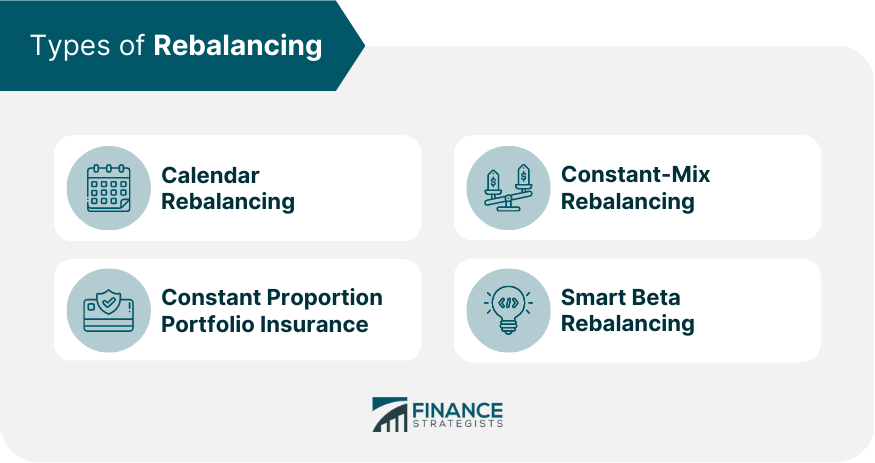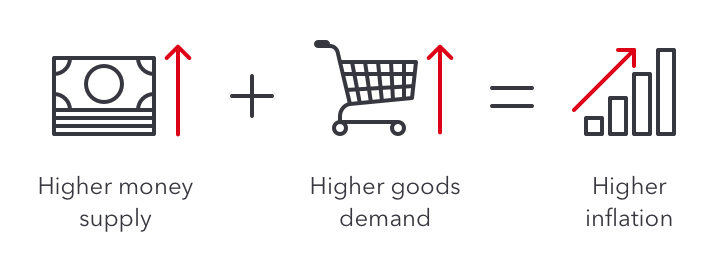The Future Of Annuities In Portfolio Management. Because they ensure a consistent flow of revenue during retirement, annuities have been an essential component of sound financial planning and portfolio management for a very long time.
To better satisfy the needs of modern investors, annuity options will need to continue to develop along with the rest of the world.
This article will address how annuities are evolving to satisfy the requirements of investors better and investigate the potential of annuities in portfolio management.
The knowledge available to investors today is more significant than ever, enabling them to make decisions on their finances that are well informed.
Because of this improvement in knowledge, we now better understand the potential benefits annuities can provide when included as a component of a diversified investment portfolio.
This essay aims to offer readers new perspectives on current developments in the annuity industry and how those trends influence portfolios worldwide.
An Introduction to the Fundamentals of Annuities
When correctly managed, annuities can assist investors in meeting their long-term monetary objectives and are an essential component of portfolio management. They include entering into a contract with a life insurance business in which the investor makes a one-time payment to the insurer in exchange for periodic payments throughout a predetermined amount of time.
Investors can plan for their future requirements and receive a stable income during their retirement years with the help of annuities. When choosing an annuity, it is essential to consider several factors, including the kind of annuity you intend to buy, your age when you plan to begin making withdrawals from the account, the amount of money that will be required monthly, and any costs that are connected to the product.
Before making a choice, it is vital to research various service providers and compare their offerings. You can ensure that your annuity satisfies both your short-term and long-term financial goals if you have a thorough awareness of these elements.
Advantages of Annuities in Portfolio Management
When it comes to the administration of a portfolio, the age-old proverb “time is money” rings especially true. Among investors, annuities are becoming an increasingly popular choice because of the potential safety and long-term benefits they offer, such as the opportunity to lock in rates of return and tax deferral on returns.
In addition, owners of annuities have the ability to access their money far sooner than they would be able to do so with other investing strategies, all while retaining complete control over their assets. Until the investor reaches retirement age, they can withdraw money from their annuity accounts without having to pay taxes or incur penalties. This feature enables investors to have more leeway in their budgeting for spending and assists them in planning out their financial future in a more organized manner.
Additionally, annuities typically offer higher returns than traditional savings accounts, increasing their appeal as investments for people who want to maximize their profits. In a nutshell, investing in an annuity confers many benefits that, taken together, make the strategy deserving of serious attention by any portfolio manager.
Future Of Annuities In Portfolio Management
Types of Annuities
There is no denying the value that annuities add to managing a portfolio. They offer a constant and continuous source of income, which can make budgeting more accessible, and they also allow for the spreading out of assets over time, which allows for more diversification of the investor’s portfolio.
When considering purchasing an annuity, it is crucial to be aware of the various possibilities available because there are so many distinct kinds.
There are primarily two types of annuities available: fixed and variable. The amount of money received from a fixed annuity is the same each month or each year. This ensures that your payments will be the same regardless of how the market is performing; however, generally, the returns on these assets are lower than those on other types of investments.
Variable annuities, on the other hand, have the potential to yield more significant returns but come with a higher level of risk. Because their value is tied to the stock market’s performance, variable annuities risk suffering substantial losses if the market underperforms. It is essential to remember that if you decide to withdraw your money from either type too soon, you will likely be subject to surrender fees.
Before investing any money in an annuity plan, it is imperative that you have a solid understanding of the benefits and drawbacks connected with each option, regardless of the form of annuity you decide to purchase. You can ensure that you find the product most suitable for your requirements and goals by conducting research and consulting with financial advisors in advance.

Variables That Affect How Much an Annuity Costs
It shouldn’t be surprising that annuities are becoming increasingly popular among those who manage portfolios. Recent research indicates that the size of the global annuity market was estimated to be greater than $6 trillion in 2020 and is expected to continue expanding exponentially each year. This points to a tremendous opportunity for investors who have a solid understanding of the different elements that influence the cost of annuities.
When buying an annuity, it is vital to have a fundamental understanding of essential topics such as interest rates, mortality risk, administrative fees, inflation protection, and other features, as this will help determine the cost of the product you are interested in buying.
The interest rate is a significant factor since it impacts not only the returns on investments but also the value of the policy as a whole.
The mortality risk is another factor that must be considered, and it refers to the length of time over which you can anticipate continuing to receive payments from your policy in light of the most recent life expectancy statistics.
Researching the administrative fees that come with owning an annuity is another crucial step to take before purchasing one because these expenses can have a significant bearing on the return.
In conclusion, when picking an annuity product, inflation protection may be advantageous depending on the individual’s requirements and objectives because of its capacity to offer protection against the long-term trend of growing costs.
Individuals can make educated decisions about their financial futures and minimize the risks involved with retirement planning if, before investing in an annuity product, they consider all of these elements carefully.
Recent Events Regarding the Development of the Annuity Market
In recent years, the market for annuities has undergone some innovations, leading to new products that cater to the requirements of both investors and providers.
One such development is the introduction of indexed annuities, designed to offer protection against the volatility of the stock market while still providing for the possibility of growth. These kinds of annuities allow customers to safeguard their assets from significant losses brought on by market downturns while offering substantial rewards if markets perform exceptionally well.
In addition, some insurance companies have begun offering deferred income annuities, designed for people who want to amass money without taking on an excessive amount of risk and which provide a stream of income over time.
In addition, there has been a greater focus on the risks connected with longevity linked to traditional fixed annuities. This has led some insurance companies to offer dynamic or variable annuities to manage these risks more effectively. People who invest in active and variable annuities can increase the amount of money they save for retirement throughout their lifetime because the payments are adjusted according to the current state of the economy. This technique enables retirees to adapt their expenditures according to how long they expect to live, which in turn assists them in ensuring that they will only exhaust their financial resources after their time.
Everyone interested in securing a steady stream of income throughout retirement has options available to them thanks to the wide variety of products offered for annuities today.

Things to Take into Account When Selecting an Annuity
The panorama of what the future holds for annuities in portfolio management is constantly shifting. When looking to include annuities in their clients’ portfolios, financial advisers have some considerations that need to be made, including the type and amount of the annuity and how the annuity fits into the broader portfolio.
It’s like taking a trip back in time to when wise elders would make decisions based on their years of experience and wisdom; investors in today’s market need to do the same thing.
When selecting an annuity for your investments, you should clearly understand the type of annuity you are purchasing, whether it be fixed or variable, as well as any costs linked with the annuity.
In addition, putting too much of your money into a single type of investment can leave you vulnerable to financial setbacks. Diversifying your assets for retirement by purchasing an annuity could help protect you from the market’s volatility while also serving as a supplement to other sources of income, such as social security payments.
In the end, ensuring you have sufficient funds when needed will require you to make well-informed decisions about your retirement plans.
The Influence That Tax Laws Have on Annuities
Because of their capacity to deliver risk-free income in addition to diversity, annuities are gaining more and more favor in portfolio management. As a result, modifications to tax regulations can have far-reaching repercussions for people who hold annuities and investors.
Taxes on capital gains, taxes on inheritance, taxes on federal estates, and other levies of a similar nature all have the potential to influence the economics of an annuity contract, namely its cash value or payouts over its term.
For instance, the taxation of capital gains on annuities differs depending on the kind of account. In contrast, traditional IRAs do not have to pay capital gains taxes until the funds that are withdrawn become taxable wages; Roth IRA accounts may be subject to taxation when they are transferred from one beneficiary to another.
Furthermore, depending on the nature of the inherited asset, annuities passed down through families may be subject to taxation. It is essential for both financial advisors and their customers to have a solid understanding of the intricacies involved in the myriad of ways in which various tax treatments influence annuities within the context of a specific portfolio. This will help alleviate the problems.
Investing in annuities that are linked to an index
Tax regulations have a significant impact on both the management of investment portfolios and annuities. They can determine whether the investment is valuable, making it vital to know before investing to make an informed decision.
When evaluating the impact that tax regulations have on annuity investments, one must, as a result, consider the different kinds of taxable profits and the kinds of gains that aren’t taxable.
Investing in index-linked annuities provides investors with the opportunity for excellent returns while also providing protection against the volatile nature of the market. These products combine characteristics of typical insurance policies, such as death benefits, coverage for long-term care, and guaranteed income streams, with exposure to stock indexes, which enables more growth over time than many other types of investments.
Investors stand to gain from this type of policy in two ways: first, the peace of mind that comes with having life insurance, and second, the opportunity for potentially more significant returns if the markets do well. When it comes down to it, investors can make educated decisions about their economic futures when selecting an annuity option for their investment portfolios if they conduct an accurate risk-versus-reward analysis.
Retirement Income Plans and Long-Term Financial Objectives
Because annuities provide a safe and dependable source of income that may be put toward achieving long-term financial goals, the field of portfolio management is beginning to place an increased emphasis on using these products.
In the case of annuity contracts, an investor will make a one-time payment in exchange for receiving periodic payments throughout the contract’s duration from an insurance provider.
Investors who choose this sort of investment may benefit from stable returns throughout their retirement years and increased protection against the risk of market volatility.
Since they can produce a steady cash flow, annuities are frequently utilized by retirees as a supplementary source of income to other forms of retirement income, such as Social Security benefits or pensions.
In addition, individuals who purchase annuities can choose between a fixed or variable payment schedule, which is based on how well the investments that underpin the annuity perform.
It is essential to consider all of the possibilities before settling on the one that is most ideally suited to the specific circumstances of each individual’s life before deciding which course of action would be most beneficial.
The Importance of Financial Advisors in the Annuity Planning Process
When it comes to arranging for an annuity, the role of advisors is extremely important. It is essential to ensure that financial instruments are used appropriately and with an eye on the long term because they can help provide future security.
Consider the following scenario, which uses Anna and her elderly parents as an illustration of this point: When Anna’s parents were considering their options for retirement, their financial planner recommended that they include an investment in annuities as part of their overall retirement portfolio.
After giving it some thought, they decided to go through with it, but they wanted additional information on how such items operated. Their advisor was able to walk them through the fundamentals of how annuities use and provide some helpful insight into the kind of product that would be most appropriate for them based on the specifics of their requirements and goals. In the end, doing so enabled them to assemble a diversified portfolio of assets that will continue to benefit them for many years.
Having access to experienced professionals familiar with annuities may benefit many people interested in constructing secure portfolios for themselves or their loved ones. Advisors have the knowledge and experience required to negotiate the complexities of the markets and devise strategies uniquely customized to each investor’s individual circumstances.
Advisors play a crucial role in ensuring clients’ long-term success by playing various roles, beginning with assisting clients in determining which types of investments are appropriate for them, continuing with providing information on tax consequences where necessary and concluding with implementation.
Concluding Remarks
In conclusion, annuities are an essential component of both the management of portfolios and the formulation of long-term plans. They have the potential to supply a constant flow of income during retirement, thereby providing increased financial security and greater mental ease.
According to a recent survey, approximately seventy percent of retirees report feeling secure in the knowledge that they can rely on annuities during their golden years. Individuals can make informed judgments regarding the type of annuity best suited to fulfill their individual needs and objectives if they have access to the appropriate guidance from an expert advisor.
When thinking about how to invest for retirement, I think it’s essential for everyone to investigate the various possibilities that are accessible.











Leave a Reply